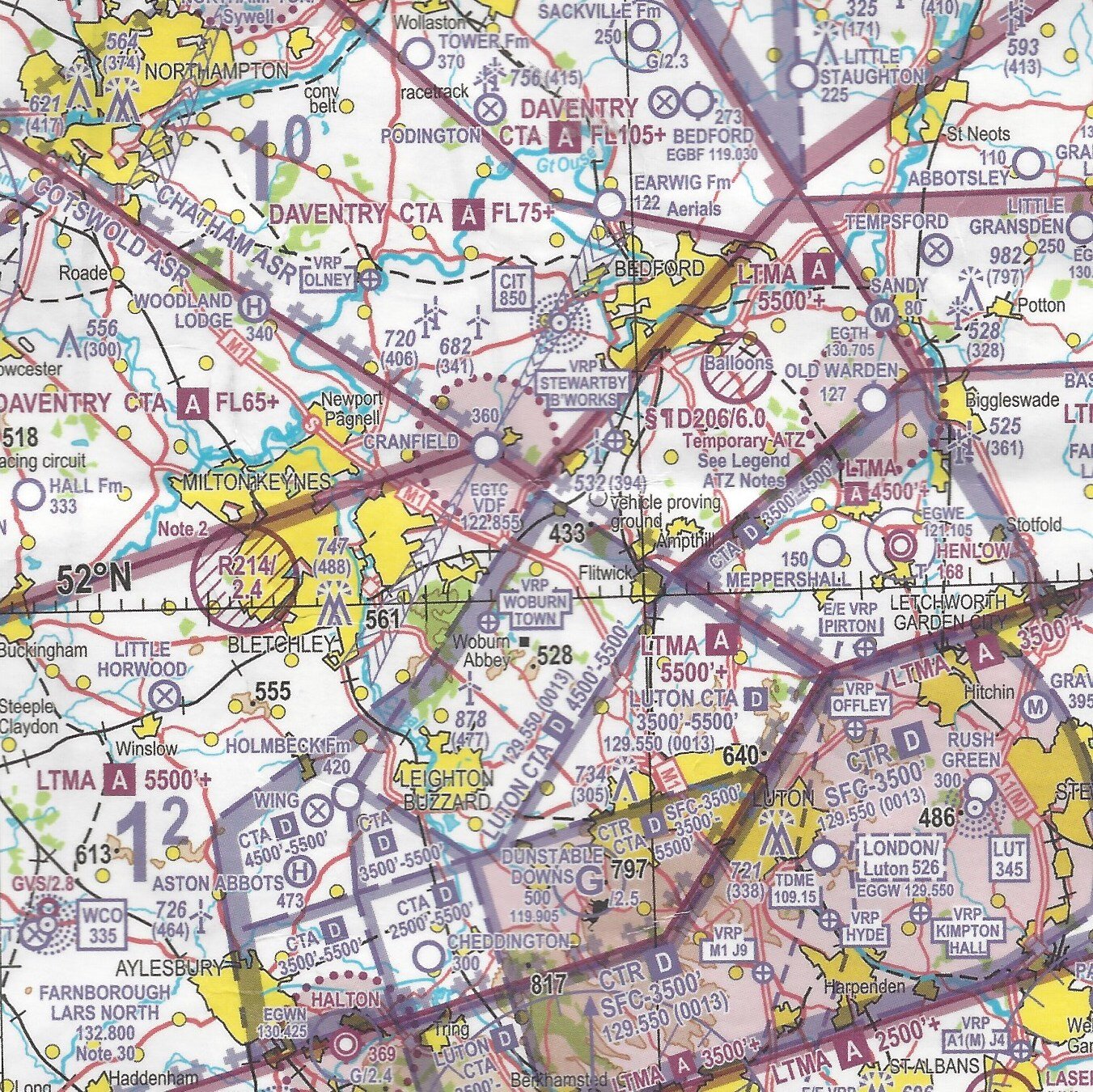
Our Airfield
The airfield at Dunstable is one of the most famous Gliding centres in the world. On a very busy day such as during competitions in the summer, we can achieve up to 100 launches by aerotow or winch. Across the year we generate up to 30,000 flight ‘movements’, making us more active than many regional commercial airports.
We first started flying at Dunstable Downs in September 1930, initially renting and subsequently purchasing land from local farmer Mr Pratt. This included ‘Hangar Ridge’ where pupils in ‘Primary’ Gliders would be sent off the top off the slope for their first ‘hops’. The airfield included part of the Downs called the ‘Bastion’, and more experienced pilots were launched from there by ‘Bungy’. Aerotowing and winch lauching were the normal launch methods by the end of the decade.
Over the years other neighbouring fields were acquired, the last being the 29 acre South East field, in 1968. The County Council acquired our section of the Downs in 1974.
Originally there were electricity pylons across the airfield, which occasionally led to sudden loss of power in the local area if a cable fell across them - they were buried in 1949.
Situated about 500ft above sea level on a largely chalk foundation, our field can drain relatively quickly after rain, enabling us to launch at all times of the year.
With the wind from the West or North West we can use the ‘ridge lift ‘ provided by the Downs to stay in the air for many hours, even in mid-winter. Also, in just the right conditions in an Easterly wind we can even get very local wave conditions, quite rare for this part of the country.
Unlike most modern airfields, ours isn’t flat! The white lines in the picture indicate the upward slopes. From the pilot’s point of view the topography is very useful, as we can usually land uphill.
At one time the deep ‘Gully’ beside the clubhose and hangars was used for Motorcross rallys. It became a significant landfill site and most of it was levelled by the mid 1970s. Part of the gully remains and it is our favourite landing spot!
Another feature is the lack of clearly defined runways, although there are local conventions for launching and landing.
Our daily operations are dicated by the the wind direction and strength. We take off into the wind and each morning the Duty Instructor and Tug Pilot decide which launch point will be used and in which direction launches will happen. Sometimes we have to change ‘run’ during the day.
We are lucky enough to have 4 launch points which allow us to take off and land in the majority of wind conditions. The combination of launch point and take off direction are known by the members as the “South West”, “West“, “North East” & “East” runs. As the prevailing winds tend to come from the South West and West, those two runs are our most commonly used ones and are both easily viewable from the restaurant.
The level of activity is largely driven by weather conditions, and generally there are more flights in the ‘season’ from March to around the end of September. We can operate from sunrise - more typically ‘after breakfast’! - to sunset, and in the summer some of the most enjoyable flying is in the evenings, often for groups of visitors.
We do our utmost to be good neighbours and therefore our tug pilots are trained in the importance of noise abatement and follow carefully planned towing and return routes. Whenever possible, they will do their best to use the various options available to them throughout the day to help minimise the noise disruption over specific areas.
Dunstable Downs Airfield was already very active when Luton Airport was opened: our first aerotow training took place in the early 1930s at a small field West of London known as ‘Heath Row’!
Today we are situated within the Luton Control Traffic Region (‘CTR’), this is Class D airspace and goes up from the ground to 3500’ above sea level. The surrounding area is one of the most complex areas of airspace in the country. The Cub operates under a Letter of Agreement with the National Air Traffic Service, which enables us to share airspace with traffic using nearby London Luton Airport.
Weather permitting, we are active 364 days/year and typically record between 20,000 and 30,000 flight movements per annum.
Notes for pilots in the vicinity of Dunstable:
No arrivals permitted by air other than emergencies
Dunstable Radio = 119.905
Launching by Aerotow and Winch
Intense gliding activity including aerobatics in the vicinity and in Class G within 10nm.
Dunstable is one of most active Cross-Country gliding centres in the country with Dunstable-based gliders often reaching as far afield as Cornwall, Snowdonia, the Isle of Wight, the East Anglian coast and as far North as Yorkshire.




